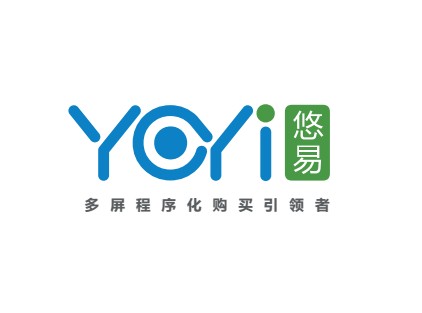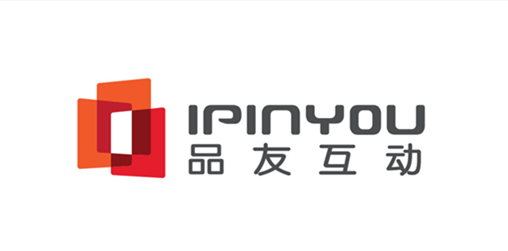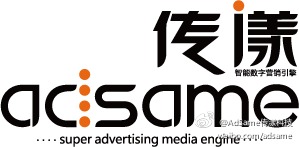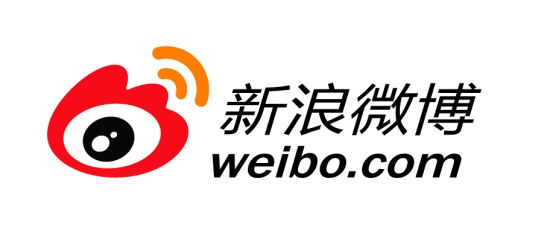Top 5 Chinese payment gateway for your website
The market of e-commerce stand alone websites growing very fast in China. In order to have your own e-shop website you need to consider to get a good payment gateway to accept your payments online.
Everyone who is new to ecommerce will tell you that the most difficult task is not only to decide which platform is the best one but also the different factors that you need to take into consideration when deciding which gateway best fits your needs. Choosing a payment gateway can be difficult, there’s a lot of competition, a lot of confusion and a lot of data to figure out before you can work out which payment gateway to choose. So we’ve decided to describe five of the most popular options to help charities see if we can try and help narrow down which Chinese payment gateway is the best for you: (more…)
General situation of fake products in China
It is common knowledge that fake products are everywhere in China, from large cities like Shanghai to remote small towns in Western China and, not surprisingly, online markets are not the exception, even though there is a lack of acknowledgment from their part, it seems that fake products are a part of China whether we like it or not.
The online market giant Alibaba group was sued in the U.S. regarding fake products regulations. According to Jack Ma, the founder of Alibaba, his company spends over one hundred million RMB each year on actions against counterfeit goods. The situation has improved considerately over the past few years, some shops have even been closed down due to this sort of issues. 2Open, as a company who deals everyday with marketing and e-commerce, is used to supervise online sales in China for many clients and the number of shops selling a certain brand with an unbelievably lower price has decreased noticeably in comparison with last year. There is still a lot of work to do, but exactly what types of products are more likely to be faked?

SHENZHEN, CHINA – AUGUST 04: (CHINA OUT) Police officers deal with fake brand-name items at a shop on August 4, 2014 in Shenzhen, China. Shenzhen police seized a large number of fake brand-name items, like Hermes, Gucci, Rolex, Chanel, Prada, Miumiu, and so on, worth 5,000,000 yuan (810,000 USD). (Photo by ChinaFotoPress/ChinaFotoPress via Getty Images)
The most common faked goods are well-known brands, such as Nike, Adidas, Louis Vuitton, Gucci, etc. If a new brand wants to enter China, it will seldom encounter issues regarding fake products. In this situation, just a small budget is needed for online marketing which could be used for setting up a shop on www.taobao.com, putting online Ads or even buying key words on search engines, all of which can have a positive effect and lead buyers to get to know your brand. Since you are the shop owner and the only supplier at this moment, the buyer will come to you directly; no other shops will take potential buyers from you.
Let us say your brand successfully entered the Chinese market, perhaps one day someone will start faking and selling your products, but how would this affect your brand? Some argue that this is just indicator of the success and popularity that your product has had in the Chinese market and that there are no reasons to be worried. Experts agree that there is plenty of space in the market for both parties; a lot of people prefer to buy original products for a higher price than fake ones for a lower one. Counterfeiting could be considered a promotion activity for a brand, after all, if you are confident about your products, put money into marketing, let people know about it, you will get money back, no doubts about it, but how is the future looking for fake goods?
According to Xinhuanet, the General Administration of Quality Supervision, Inspection and Quarantine (AQSIQ) has gathered around four giant e-commerce platforms: Alibaba, Jingdong, Suning, Yihaodian to sign a cooperation agreement which will help to release inspection results of the fulfillment of product quality commitment. AQSIQ has developed a search platform of inspection of product quality, which will be put online for public use around March 15, 2016.

Fake products problems continue to plague the development of e-commerce. Jingdong and Alibaba have been fighting a war these days, accusing each other of not making efforts to end the fake goods. The offline scene does not look very bright either, street shops are now going through a rough time these days, people are getting used to purchase everything online, from groceries to electronics, during the singles day alone (Nov. 11, 2015) Taobao reached a sales volume of 91,217,017,615 RMB.
It is an Internet Era, no doubt about it, and counterfeit goods should not represent any obstacle if one should intent entering the Chinese market. A smart digital marketing strategy, like the one 2Open offers, can get your brand the recognition it deserves.
Let us know what you think in the comments below.
This article was edited by Andres Arroyo from 2Open.
Top Demand Side Platforms (DSP) in China
Since entering China in 2012, DSP has become a major competition area of all the “powerful and visionary” companies. Big companies like Baidu and Tencent have built their own DSP platforms, traditional advertisement agencies and new players flocked to this area, but there is no stable situation yet in this market. So if you decide to embrace this new technology, doing a test-run is highly recommended. Below are five major Chinese DSP providers 2Open has worked with before:
悠易互通 YOYI

Yoyi Media is a Chinese provider of targeted online advertising and marketing solutions for advertisers and media publishers. Founded in 2007, Yoyi Media specializes in the research and development of online precision targeting technology and Internet marketing services. Yoyi provides both impression-based and performance-based advertising solutions and has developed a network of top publishers in China. Through three product-line offerings YO-Focus(TM), YO-Crazy(TM), and YO-Target(TM), Yoyi Media enables marketers and brands to reach targeted audience based on their demographics, behavior, expectation, time, and location. With support centers in Beijing, Shanghai, and Guangzhou, Yoyi Media serves top brands and their agency partners through a premium ad network that includes China’s best-known portals and vertical sites
品友互动 iPinYou

Beijing iPinYou Information Technologies Co., Ltd (iPinYou) was founded in 2008 and is now China’s largest DSP (Demand-Side Platform). iPinYou is headquartered in Beijing and has offices in Shanghai, Guangzhou and Silicon Valley. iPinYou has built world class Real-Time Bidding (RTB) technology and algorithm, proprietary cloud computing platform and patented audience profiling technology. iPinYou has served over 200 brands in IT, financial service, auto, FMCG, travel and more. It has also significantly improved the advertising effectiveness for advertisers and fostered extensive partnerships with domestic mainstream and private exchanges. It is established as a leading provider of audience based programmatic advertising technology.
传漾科技 adsame

Adsame is a digital marketing agency offering advertising, data insight, and publishing solutions. It helps customers to be more concise and efficient in digital marketing. The company offers two platforms: products platform and media platform. Product platforms include Dolphin Advertising Release and Management and Eagle Advertising Monitoring and Assessment etc. Media platforms include Max Brand Advertising Network (portals, vertical, SNS, and video).
互动通 hdtMEDIA

Established in 1999, HDT Holdings Group is the pioneer both in China’s rich media industry and in rich media advertising formats. HDT Holdings Group consists of six major platforms: digital media platform hdtMEDIA, mobile media platform hdtMobile, programmatic marketing platform hdtDXP, premium publishers service platform hdtSSP, data management platform hdtDMP and mobile ad exchange platform H2.
聚效广告 MV AD

Founded in 2009, MV Ad Platform is a company specialized in targeted online advertising with an efficient and professional elite team. MV Ad platform has R&D centers in Shanghai and Beijing, and subsidiaries in Guangzhou and Hangzhou. MV Ad platform ranks among the best in resource integration, innovation and professional competence.
This article was edited by Andres Arroyo from 2Open.
References:
http://www.marketing-interactive.com/brief-guide-programmatic-ad-buying-china/
https://www.clickz.com/clickz/column/2282204/the-challenge-of-rtb-dsp-in-china
Demand Side Platform in China
Overview of Demand Side Platform (DSP) in China
After arriving to China in 2012, DSP has gained popularity among advertisers due to its way of changing the traditional advertising buying model, from media buying to target audience buying. It lets advertisers see their ads performance more intuitively, allowing them to change promotion strategies more efficiently. As one of the main trends in the digital advertisement development , there is no doubt that DSP will play a more important role in China’s digital marketing scene.
What is DSP?
Demand side platform (DSP) is a system that provides the technology needed to unlock the value of real time bidding (RTB) information provided by ad exchanges. There are thousands of advertisers on the Internet trying to promote their products with high-quality media, precise target audience, optimized advertising strategies and high ROI (Return On Investment). In simple terms, DSP is a service platform for advertisers, in which they can set up target audiences, delivery area and biding price etc.
RTB and Ad exchange
Real time bidding (RTB) is a digital ad buying process that allows advertisers to evaluate and bid on individual impressions. Let us pretend that the Internet is a big cobweb, where users leave traces when they are surfing on it. By using this new technology, advertisers can take all this data into consideration, and then decide the site, placement and bidding price on each ad impression. Usually, this process is completed in 120 milliseconds.
Ad exchange is like an open online advertising marketplace that lets publishers and advertisers connect with each other. You could think of it as a stock exchange; however, it works by auctioning each impression to the highest bidder.

What are the advantages of DSP?
- Wide reach: There is no limit of time and space, advertisers can show their ads when they want to show them and to any target audiences.
- Low cost: Unlike traditional media ads, DSP uses programmatic buying and charges by CPC/CPM, which gives advertisers more flexibility with their budget.
- Specific target: With the Data Management Platform (DMP) of DSP, advertisers can easily target their potential audience according to different characteristics (like age, gender, place, income, etc), this makes advertising more accurate and cost-efficient.
Challenges of DSP development in China:
- Lack of transparency
Many Chinese DSPs do not provide full transparency and access to their platforms, which makes it hard for advertisers to understand and optimize their marketing strategies. Usually, they just provide a report for advertisers after one promotion. As a matter of fact, some DSPs cannot even guarantee the stability of the system because of the lack of technical ability.
- Quality of media resources is hard to define
Usually big publishers just release leftovers from their inventory to ad exchanges, while they build their own private exchanges with premium resources. For example, Baidu, Alibaba and Tencent all have their own private marketplaces, through which they sell these good ads resources to big clients at a higher price. So advertisers who want to work with DSP in China have to work very hard to find the high quality traffic.
- Accuracy of target audience is uncertain
Big companies like BAT (Baidu, Alibaba and Tencent) are reluctant to share their data, and there is no mature Data Management Platform (DMP) in China yet. So most DSP companies just gather data from their own ad network, third-party ad serving, or existing software, which makes the accuracy of target audience data rather doubtful.
What is a suitable DSP?
There are four features a good DSP should have:
- Appropriate RTB capability: A good DSP must be able to decide whether to participate in the auction and what is the biding price for each impression in real time.
- Appropriate directing capability: A good DSP should have a huge Data Management Platform (DMP), through which advertises can target potential audiences more precisely.
- Appropriate data analysis capability: Be able to provide, analyze and optimize reports for advertisers, which are the most valuable part of a good DSP.
- Appropriate technical capability: A successful campaign on real-time bidding (RTB) system depending mainly on the algorithm and matching model of a good DSP.
This article was edited by Andres Arroyo from 2Open.
References:
http://www.marketing-interactive.com/brief-guide-programmatic-ad-buying-china/
https://www.clickz.com/clickz/column/2282204/the-challenge-of-rtb-dsp-in-china
2Open at Territorio Creativo: China Business Overview
On Friday the 5th of February Luis Salvador Galán, the CEO of 2Open, went to give a speech to the well-known Spanish marketing consulting agency called “Territorio Creativo” (https://www.territoriocreativo.es/en/). Territorio Creativo was founded back in 1997 and it has had a huge development ever since. In 2005 its blog (TCBlog) was brought to life which later became to be one of the most influential blogs in the field, this helped and boosted the company to the highest relevant positions in the area. As for 2009, the company decided to focus more on Social Media Marketing and nowadays they operate in many different locations around the globe and have more than 100 employees.
Every Friday they organize a meeting during a breakfast session in which an expert shares experiences, expertise and knowledge with all the company’s members, this is usually held in the Madrid and Barcelona offices. They call it TcDesayunos. Luis S. Galán decided to share his Chinese experiences in the Digital Field and commentated on his personal vision about China’s landscape. Although he could have spoken about the development and best practices of 2Open, he opted for another approach and instead took the opportunity to share business experiences and receive brilliant ideas and comments from the audience.

The talk focused mainly on creativity, differences in politics, and the development of China in certain digital areas. The relation and contrast between creativity and freedom were discussed as well as advantages and disadvantages between the Spanish political system and the Chinese one. The huge development of mobile use and e-commerce in China was also a topic of discussion, since it has had a considerable growth in the past few years. The aim of this talk was mainly to give the Spanish audience a grasp of what the Chinese business environment looks like and where it is heading so they could get an idea of the so called “Chinese dream”.
If you wish to have a look at the article of Territorio Creativo about the session, and if you speak Spanish, here is the link to it: https://www.territoriocreativo.es/etc/2016/02/china-emperadora-del-ecommerce.html
This article was edited by Andres Arroyo Olson from 2Open.
The commercialization of Wechat. User experience or profit?
January 11, 2016, Zhang Xiaolong, the man behind the curtain of the Wechat Empire, who had never given a public speech before, stepped onto the stage of Wechat Open Class and shared his opinion on Wechat’s values. The fact that Zhang stood out at this moment is a symbol of the crucial timing of Wechat’s commercialization.
Wechat has now approximately 650 million users; the process of monetization has never stopped in its five years’ existence. Long have begun the business services, such as Wechat payment, shopping, taxi ordering service, etc.
In his public speech, Mr. Zhang shared some of his concerns about the future of the Chinese IM giant. He said:
“Wechat Public Platform seems like a media platform, but we prefer the Public Platform to be more than that, we want to focus more on the developers and that is our goal for 2016. Where does this need come from? We found out that more and more start-ups initiate with a Wechat Offical Account instead of developing a mobile application because the latter costs way too much. A Wechat Official Account could achieve almost the same things but more cost-effectively.”
“It was not our intention to become a media platform, we have always wanted to build a platform to provide services,” Zhang said, “that is why we even created a Service Account in Wechat, but it has not quite met our requirements. Now we are developing a new form: Application Account. We hope that with this new form of Public Account, when users follow it, it will be as if they had just installed an application. This Application Account will be in silence mode for most of the time but when users need it; they will easily find it in the app. By doing this, we grant a lot of apps a lighter existing form and simplicity.”
 The leader of Wechat also expressed a more strict regulation for commercial activities in Wechat “There will be more restrictions for marketing events in Wechat Moments, because meaningless content will take up users’ time. The same goes for other functions of Wechat, we hope that there is as little information as possible in Wechat, so that the users can focus on their tasks and finish them effectively.”
The leader of Wechat also expressed a more strict regulation for commercial activities in Wechat “There will be more restrictions for marketing events in Wechat Moments, because meaningless content will take up users’ time. The same goes for other functions of Wechat, we hope that there is as little information as possible in Wechat, so that the users can focus on their tasks and finish them effectively.”
After trying to make money with advertisements, Zhang said that he wanted the commercialization of Wechat to be invisible and not a disturbing process based on monetizing of traffic.
One possible reason for the creation of the Application Account is that the current Service and Subscription accounts have impaired the users’ experience. Being buried in numerous and complicated piles of information distracts the users from their goals.

How to balance user experience and commercialization?
This is not a new challenge, and not just for Wechat, social platforms like Facebook, Twitter and Instagram, who already have a mature advertising model based on information flow, come across the same problem every time they try to launch new product for advertising. Unfortunately, there is no existing remedy for this headache.
At the moment, ads in Moments follow several basic rules: if users opt out or just leave it there, the possibility that this ad appears in your friends’ time-line is only 20%. The percentage will rise to 95% if you click, like or comment on it.
Each ad will be able to circulate for seven days, while every single user will only receive one ad within 48 hours. An ad with no likes or comments will be removed within six hours.
We have discussed a lot about the commercialization of Wechat, but is there a possibility that the commercialization of Wechat is not limited by the current models? Could it be possible that the commercialization of Wechat is outside of Wechat?

To understand this, we need to know some fundamental values of Wechat.
- Wechat provides us an essential ID in the era of Mobile Internet – a Wechat account. We use it to keep track of our life and business organizations use it to find us. Before Wechat, the cellphone number was the most important ID, or even earlier we had our e-mail address.
- Wechat has created Public Accounts, this not only solves the problem of digital identity for offline businesses, but also enables a new communication model: one user to many users information exchange, interactive feedback, rich media and mobilization.
- It provides the information flow the highest degree of freedom. We can contact our friends quickly and conveniently by sending messages, sharing information in Moments or through a group chat. All of this has created conditions for a more dynamic flow of money and information.
- This value is still yet unclear however, it would be an important one. Wechat could use Wechat Accounts to locate users and Public Accounts to locate businesses, accumulating trading data between users and businesses so that they could create a “Cloud of consumption”. Based on this cloud, Wechat may provide services like memberships to users or CRM to businesses.
In a word, the commercialization of Wechat is based on output and monetization of these four fundamental values instead of the commercialization of the Wechat as a mobile application itself.
What do you think?
Let us know.
This article was edited by Andres Arroyo from 2Open.
References:
http://www.vvjia.com/article/20151008153623
http://www.99eo.com/info.php?id=8272
http://www.meihua.info/a/65851
http://www.meihua.info/a/65896
http://technode.com/2015/08/24/wechat-ad-moments/
General situation of cross-border e-commerce in China
General situation of cross-border e-commerce in China
2014 is called by many the year of beginning of cross-border e-commerce in China. Traditional retailers, domestic and oversea e-commerce giants, start-ups, logistic service providers and distributors have all joined this battle trying to get a share of the cake.
No doubt this is a time of challenges and opportunities, getting to know the current situation is helpful to forecast a slice of the future.
So what do we know about the positive factors that lead the cross-border e-commerce in China continue to grow?
A window period of dividend policy
With the official documents N°56 and N°57, issued by General Administration of Customs of People’s Republic of China (PRC), the cross-border e-commerce has finally been authorized at 2014 in China. The”6+1” testing cities (Shanghai, Chongqing, Hangzhou, Ningbo, Zhengzhou, Guangzhou, Shenzhen) have since then enjoyed the tax reduction for cross-border e-commerce, which means products purchased through cross-border e-commerce channel will only be charged with personal postal articles tax, instead of the “customs + added-value tax + consumption duty” for common import trade. Thanks to policy incentives, which is aiming at bringing the oversea consumption back to mainland China, cross-border e-commerce has witnessed rapid growth.
Huge potential of customer needs
Nielsen recently issued the China’s E-commerce Industry Development and Hangzhou Index White Paper, suggesting that “affluent and well-educated young people make up the majority of cross-border online shoppers and the cross-border online shopping features at low frequency and higher spending per order compared to domestic online shopping”.
According to the statistics from General Administration of Customs and Research Center of China’s e-commerce, the size of transactions and the user’s volume have tremendously increased in these couple of years. The size of transactions grows from ten billion to hundred billion and some predictions show that it will reach trillion level in 2018.
Not everything is favorable, we are still facing many challenges
The tax reduction policy will not last for long because the government has to find a balance between the traditional trade and the cross-border e-commerce. The uncertainty of policy may affect every segment of cross-border e-commerce in China.
The immaturity of logistics and customs clearance system, the slow process makes the after sales services can’t be guaranteed. In the future shopping experience needs to be bettered with a smoother customs’ process.
The possibility of directly signing a contract between a foreign brand and a Chinese cross-border e-commerce platform is remote, therefore cross-border e-commerce platforms often use combined supply chain, which is unstable and will lead the price of product hard to be controlled. The one has the ability to get through each segment on the supply chain will be the first to take the market.
Currently, not a single cross-border e-commerce platform is widely accepted by customers, major player and start-ups are basically at the same starting line. The early stage development relies more on policies, lower price, richness of products, but as time goes, the competition will be back to the retail level – brand, supply chain and customer services.
We do still have the possibility to change the game, don’t you think?
Check the original Chinese article here
References:
Wechat Marketing — Service account or subscription account?
A Wechat subscription account might fit you more if you want to update your audience information on a daily basis. While in terms of e-commerce functions, a wechat service account offers a more comprehensive scope than a subscription account does.
How to verify a Weibo account when you are not a Chinese company?
How to verify a Weibo account when you are not a Chinese company? In order to have your enterprise (brand) Weibo account verified, you have to provide some information to prove your identify. This gives your audiences and potential clients more trust in your brand’s legitimacy, and ensures that your identity is well-protected by Weibo.
You have all you need to know about your Chinese customers’ behavior. Do you have all it takes to make the most out of it?
In our China digital monitoring and advisory service, we track and analyze the accessible data from the back offices of multiple digital platforms through which our client interacts with its customers: Weibo, WeChat, Tmall flagship store, and Official Website. Moreover, with the benchmarking analysis of its main competitors, we further identified tactics to fine tune our client’s strategy.











